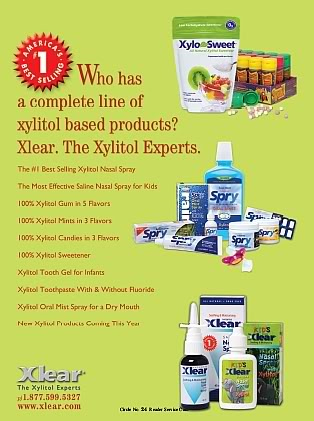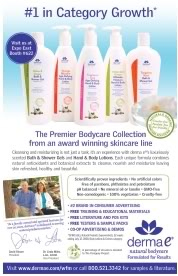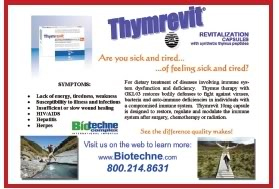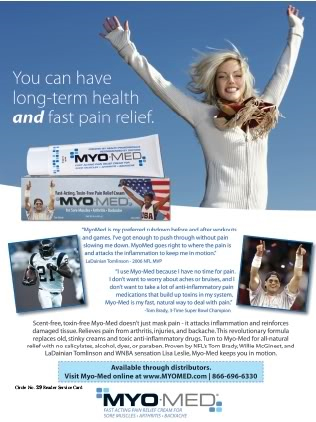An all-too-common story in every sector of our industry has been filtering out the imitators. With the popularity of natural products reaching its height, mainstream brands and novel companies looking to cash in have flooded the market. This has lead to increased consumer confusion as to what constitutes natural, and why natural is better than traditional products that use synthetic ingredients.
The natural personal care category, in particular, is at a crucial point. In May 2008, Daniel Fabricant, Ph.D., vice president of scientific and regulatory affairs at the Natural Products Association (NPA), said that natural personal care was the fastest growing segment in the natural products industry with sales “outpacing traditional personal care five to one.”
Bearing this in mind, it is no surprise that manufacturers of traditional products have altered marketing and packaging materials to appear more natural. Using earth tones and pictures of evergreens on bottles of hand lotion, however, does not make the product natural. Unfortunately, consumers have been mislead by these tactics and the reputation of truly natural personal care products is in question.
Michael Lelah, technical director of Bloomingdale, IL-based NOW Foods, says, “We’re the natural products industry. We should be the ones defining what natural beauty care means and we should be the ones protecting consumers from mass brands that use synthetic formulas, but claim to be ‘natural.’” This, however, is easier said than done. A united front that is lead by the natural products retailers who actually interact with consumers may be the only way to separate the “bad apples” from the natural personal care bunch.
What Natural Means to Us
A term as broad as natural will inevitably foster debate, especially when taking into account efficacy and safety. If a 100% naturally derived product doesn’t do the job and/or causes damage, there is no point in manufacturing it. On the other hand, says Jason Sepp, president of ShiKai Products, based in Santa Rosa, CA, his company makes a “commitment to using plant-based natural ingredients wherever and whenever we can.”
Nevertheless, consumers are generally less aware of a company’s mission statement when purchasing a new shampoo. If two products claim to be natural, but one is $2 cheaper because of its synthetic attributes, it may be the one purchased. Kim Erickson, president of Kim Erickson’s Everyday Organics, Las Vegas, NV, explains, “According to the U.S. Food and Drug Administration’s (FDA) Office of Cosmetics and Colors, words like ‘natural,’ ‘botanical’ or even ‘organic’ don’t have any legal meaning when it comes to cosmetic and personal care products. Since many cosmetics contain some natural ingredients, manufacturers can technically call a product natural even if the bulk of ingredients come from a chemist’s lab.”
Beverly Hollister, senior vice president of business development at XanGo, LLC of Lehi, UT, believes as many do in this industry, that “if you say your product is natural, then you should be able to prove it.” If a qualification for natural is not set, the term will eventually become nothing more than a marketing gimmick with no substance.
“[Natural] is a way of life for many, for companies that have grown up in the natural products industry. We eat, sleep and drink natural everyday and will do what we can to protect the term,” says Curt J. Valva, general manager at Aubrey Organics, Tampa, FL. “I am fond of saying that Aubrey is a natural products company that makes personal care products,” he adds, “NOT a personal care company that makes natural products…two very different things.”
 Sepp agrees that a standard is needed to help protect the term’s meaning, but it must be “developed in a truly unbiased way. It would also be helpful to see a cosmetics standard that allows for safe synthetic materials that sometimes must be used for reasons of safety.” Where to draw the line and who will be in charge of this standard only brings more questions to the complicated issue.
Sepp agrees that a standard is needed to help protect the term’s meaning, but it must be “developed in a truly unbiased way. It would also be helpful to see a cosmetics standard that allows for safe synthetic materials that sometimes must be used for reasons of safety.” Where to draw the line and who will be in charge of this standard only brings more questions to the complicated issue.
The NPA (as covered in the June 2008 WholeFoods, p. 8) has made an attempt at a natural standard with the launch of its NPA “Natural Seal.” Valva, who served as an advisory member of the NPA program, says the guidelines are a great start and will help differentiate natural products manufacturers that participate. Also, he notes, the NPA standard “is a living document that can and will change over time. As new ingredients and alternatives to synthetics come about, they will be reviewed and accepted into the standard. The bottom line,” he says, “is that we need to start somewhere and what better place to start than with a tough all-inclusive standard that evolved from the true natural products industry.”
Vlad Shenker, president of New York, NY-based Clotho Corp., also supports the NPA’s efforts and its proposed definition: “Ingredients that come or are made from a renewable resource found in nature (flora, fauna, mineral) with absolutely no petroleum compounds.” This, he says, “is clear and most certainly reflects our lines.”
In short, NPA guidelines state that all personal care products qualifying for the natural seal must be made with at least 95% all-natural ingredients and contain only synthetic ingredients that have not been suspected as a human health risk. Manufacturing processes, sustainability and moral responsibility also play a role in the NPA guidelines, and as Valva stated, the document will change over time. Further information on the NPA seal can be found at www.naturalproductsassoc.org.
The standard, however, is not without criticism. Linda Miles, L. Ac. D.O.M., vice president of derma e Natural Bodycare, Simi Valley, CA, acknowledges that a standard is necessary, but questions the current guidelines. “Where is the scientific research that determined which ingredients should be excluded from natural skincare formulas? Who was consulted and what are their credentials?” While the steering committee of the NPA program was made mostly of industry representatives, the information used to exclude certain ingredients came from the National Institutes of Health and the Centers for Disease Control. Further examination of excluded and permitted ingredients, however, may be one area that needs attention.
Miles says that industry guidelines should protect the delivery of natural ingredients “in order to provide the consumer with the healthiest and most beneficial skincare product.” She explains that natural ingredients are powerful and complex consisting of active compounds and other phytochemicals that “must be formulated in a manner that ensures the best delivery possible in order to help restore balance and produce healthy skin.”
The NPA will be readdressing the guidelines to the Natural Seal in 2010, and concerns and suggestions will be welcomed. Regardless of whether or not the NPA seal catches on with natural products manufacturers, the association has highlighted the need for such a certification.
Organics
The definition of natural, while being the overarching umbrella of our industry, is not the only term causing arguments in the personal care market. Organics have a special place for many core consumers who dedicate their lives to an organic lifestyle. The general public also has opened its arms to the organic industry and the increased funding recently allotted to organic farming and education in the 2008 U.S. Farm Bill shows that acceptance and overall market presence will continue to grow.
 Eileen Sheets, managing director at Bioforce USA, Ghent, NY, says that through continued communication with retailers, it is apparent that consumers are opening up to the organic industry and are willing to try organic products beyond the grocery aisle. “So we feel,” she says, “that organic, notably in bodycare, has a terrific and long-term future. For this to happen, as with any other sector, manufacturers must be truthful and vigilant with their quality.”
Eileen Sheets, managing director at Bioforce USA, Ghent, NY, says that through continued communication with retailers, it is apparent that consumers are opening up to the organic industry and are willing to try organic products beyond the grocery aisle. “So we feel,” she says, “that organic, notably in bodycare, has a terrific and long-term future. For this to happen, as with any other sector, manufacturers must be truthful and vigilant with their quality.”
As is the case with the natural market, the United States currently has no organic standard for personal care, explains Grace Ormstein, MD, CTN, scientific herbal advisor to Himalaya Herbal Healthcare, Houston, TX. “The FDA does not regulate the term organic as it applies to body care products,” she says, and the U.S. Department of Agriculture only regulates the term “as it applies to agricultural products through its National Organic Program (NOP) regulation.”
In other words, the only regulated organic standard is for food. “A company can have its products certified to the USDA’s food rules, as we (and other companies) have done,” says Valva, but he highlights fundamental questions that still remain: “Should the food standard for organic be the only standard used across all product types? Can there be organic standards similar to, but not the same as, the USDA’s National Organic Program (NOP) standard? Are cosmetics, cleaning products, candles, bar soaps or textiles (and many other product types) fundamentally the same as food?” Valva explains that certain ingredients used in processing such as reagents and catalysts could possibly be toxic if ingested. Considering this, he asks, “Do we recognize these differences and write a standard for the greater good that encourages organic farming and processing [of organic ingredients that] are not food products?”
In the future, Valva predicts, the American public, with proper education, will recognize that textiles and personal care products are different than foods and will insist on a U.S. standard that takes into account these differences. “We are smarter than we give ourselves credit for,” he says. Will a new standard be perfect? “No,” says Valva, “but neither is the USDA’s NOP.”
Some, like Monica Pound, executive sales and marketing manager of Natures Paradise, Santa Ana, CA, which produces a USDA-certified organic skincare line, argue that the USDA should take initiative now, and establish “stricter regulations not allowing the term organic to be placed on non-certified labels.”
NOW’s Lelah agrees that there is a considerable amount of mislabeling of organic ingredients in topical products. This, he says, “will only dilute the meaning of the term and undermine consumer confidence in organic as a category and the natural products industry as a whole.”
 Erickson of Everyday Organics adds, “As the natural cosmetic sector grows, more and more consumers will undoubtedly place more importance on organic ingredients. This,” she says, “is already becoming evident as ‘organic’ cosmetics are showing up on department store counters and in fashion magazines like In Style.” But, she warns, consumers, as well as retailers, shouldn’t assume products that contain some organic ingredients are safe and all natural.
Erickson of Everyday Organics adds, “As the natural cosmetic sector grows, more and more consumers will undoubtedly place more importance on organic ingredients. This,” she says, “is already becoming evident as ‘organic’ cosmetics are showing up on department store counters and in fashion magazines like In Style.” But, she warns, consumers, as well as retailers, shouldn’t assume products that contain some organic ingredients are safe and all natural.
In some instances, says XanGo’s Hollister, organic products could be subject to fungicide or mold issues. Therefore, she says, “There always needs to be an appropriate balance between natural, pesticide-free products and safety.”
Shenker highlights Clotho Corp.’s Verattiva line that uses certified organic Aloe vera, but is not fully organic. “We personally believe that in the case of aloe, which has significant research and consumer recognition for its proven healing and soothing benefits, using certified organic aloe is a more purified and hence efficacious choice.”
However, says Sheets, “You can have a product with some organic ingredients that is of greatly inferior quality and efficacy to a similar product that has been formulated very carefully with mostly natural, but non-organic, ingredients.” Regardless of this, the word “organic” on a product’s packaging is attractive to consumers. “We would like to see more self regulation with companies taking the high road on their labeling,” says Sheets, “and more education for the consumer to make informed decisions.”
Organic certification is not the whole story, adds Erickson. “There are some excellent products from small ‘mom and pop’ cosmetic manufacturers that do not bear an organic certification, even though they may contain organic ingredients. Consumers [and retailers],” she says, “can only judge the quality and ‘naturalness’ of these products by reading the ingredient label.”
What Your Customers Want
While terms like organic and natural resonate with U.S. consumers, other issues like sustainability and moral responsibility are becoming just as important to a product’s reputation as its efficacy. In other words, a company can make the most effective and natural hair or skin product on the market, but if it has no regard for the environment, tests products on animals and takes advantage of cheap foreign labor, chances are the average natural products shopper will pass it by without thinking twice.
 Cosmetic market data released this year from the Mintel Global New Products Database reported that more than 1,800 new “ethical beauty products” were introduced in the first five months of 2008. A total of 2,800 were released in 2007, and Mintel believes 2008’s count will double this number. Of all claims, “cruelty-free” was the most widely made among beauty products. Considering that Mintel also found that two in five women specifically look for “cruelty-free” beauty products, it is no surprise that more products are being produced with such a claim.
Cosmetic market data released this year from the Mintel Global New Products Database reported that more than 1,800 new “ethical beauty products” were introduced in the first five months of 2008. A total of 2,800 were released in 2007, and Mintel believes 2008’s count will double this number. Of all claims, “cruelty-free” was the most widely made among beauty products. Considering that Mintel also found that two in five women specifically look for “cruelty-free” beauty products, it is no surprise that more products are being produced with such a claim.
“As is the case for our entire industry,” says Sepp of ShiKai Products, “we do not test on animals nor do we use animal ingredients. It’s been like this in our industry since the beginning.”
Nevertheless, says Valva, “as the market expands into mainstream and some of these companies start to make claims in an attempt to close the ‘ethics gap,’ it becomes more important to remind the consumer of our commitments.” While Aubrey Organics uses cruelty-free and vegan logos on its products, he says, “These are not marketing terms or fads for us, but a way of life and a true commitment.”
Environmental conservation has also been an issue that the natural products industry has supported since its inception, and now, the general population is on board. “Consumers are becoming aware of what is in their products, as well as what impact their products have on the earth,” says Pound of Natures Paradise. From packaging to manufacturing and farming processes, consumers, especially those who frequent natural products stores, want to know what measures were taken to prevent excess waste.
Fair Trade Certified goods, although not as prevalent in the health and beauty sector, are also becoming attractive to consumers. The certification ensures that farmers are given a fair price, workers are given fair labor conditions, ingredients are sourced in a sustainable fashion and more. Lelah explains that the certification, while useful, “is much more difficult to enforce as there are only a few products worldwide that are truly certified Fair Trade. Most of these are commodity foods,” he explains, “while most personal care products contain specialized ingredients.”
Whether Fair Trade or not, says Hollister, “We strongly support industry efforts to demonstrate transparency in ingredient sourcing. It is up to us as companies bringing natural products to the market to demonstrate good practices that earn consumer trust.”
A manufacturer who fails to tell retailers and consumers from where their ingredients are sourced is most likely up to no good. Moreover, retailers shouldn’t be afraid to ask questions before bringing in a new line; especially when a company is hesitant to answer. This is even more important when claims like natural, organic, fair trade, vegan and other consumer magnets are used. “I think claims will help drive the industry, but I caution the manufacturer,” says Valva, “…today’s consumer is smart and well researched…be prepared to prove your claims…put up or shut up.”
 Behind the Label
Behind the Label
When all is said and done, however, labels, certifications, claims and eco-friendly packaging can only go so far. If a product is not effective, a return purchase will not occur. Retailers should also be aware of new trends, and incorporate all aspects of health and beauty in their personal care sections.
“The future of this market is quite exciting,” says Clotho Corp.’s Shenker. “In the body and face market, we are seeing new high-tech ways of delivering effective botanicals and cosmeceuticals targeted for specific skin areas and problems to get visible results. For hair care,” he adds, “we see a similar rate of technological advancements to compose purely natural products that address and solve specific hair and scalp issues, again for visible and tactile results.”
Lotions and shampoos are only the beginning. As consumer interest grows in any market, so does innovation, and this can be clearly seen in other areas such as natural oral care and hygiene products. But, says Sepp of ShiKai, “As this [market] develops, traditional natural products retailers will need to differentiate themselves from the Safeways, Longs Drugs and Targets that are barking at their door.” As WholeFoods columnist Jay Jacobowitz reiterates time and again, natural products stores must take advantage of specialized customer service and display their commitment to the industry. Along with this, keeping an eye on market trends, steering clear of fads and only carrying products from brands that can prove their claims is invaluable.
Skincare. Skincare products make up a large portion of this market and new and unique formulations are constantly being created. “Currently,” says Miles, “edible fruits high in antioxidants such as cranberries and blueberries have become very popular. Exotic, new antioxidants from previously untapped resources are also very popular, for example the açái berry native to the Amazon River and the goji berry native to Mongolia and Tibet.”
derma e, which uses different antioxidant formulations in many of its personal care lines, is one of many companies that believe this category will grow and improve. “Research into new antioxidants, improved delivery systems and better, less potentially harmful preservatives,” says Miles, “will contribute to upcoming trends in the natural personal care market.”
Another exotic fruit looking to make an entrance in the personal care section is the mangosteen, which is native to Southeast Asia. XanGo, a company known for its XanGo juice, which is derived from the whole mangosteen, is introducing Glimpse, Intuitive Skin Care, with BioActive X3 complex next month. Hollister explains that the line “will be free of the toxins traditionally found in personal care products, but will also maximize novel, high-performing natural ingredients from the whole mangosteen fruit, which research has shown contains powerful free-radical neutralizers.”
 Specialty formulas aimed at specific skin conditions are also becoming more prevalent in the natural market. ShiKai, for instance, has created an “anti-aging” line that works to firm and improve skin texture and tone and reduce fine lines and age spots and its Borage Therapy for Children has been clinically proven to have a positive effect on dry skin, eczema and atopic dermatitis, says the company. Its new line of hand and body lotions also use borage oil, as well as a high concentration of pure aloe vera and vitamin E to soothe the skin, and shea butter to provide a soft and silky feel.
Specialty formulas aimed at specific skin conditions are also becoming more prevalent in the natural market. ShiKai, for instance, has created an “anti-aging” line that works to firm and improve skin texture and tone and reduce fine lines and age spots and its Borage Therapy for Children has been clinically proven to have a positive effect on dry skin, eczema and atopic dermatitis, says the company. Its new line of hand and body lotions also use borage oil, as well as a high concentration of pure aloe vera and vitamin E to soothe the skin, and shea butter to provide a soft and silky feel.
Natures Paradise also uses a shea butter base in its body creams and lotions, as well as a slew of other natural ingredients in its products that range from healthy aging to baby care. Its focus, however, is the organic market. “We have developed a full line of 100% USDA-certified Organic skin care for the whole family that is also 100% vegan,” says Pound. “We believe in safety first for our customers,” she adds, “and that is why we have developed the safest skincare certified under the food standards making it safe enough to eat, but not recommended of course.”
Aubrey Organics also has USDA-certified organic skincare products, including its recently launched Treat Em’ Right line of lip balms available in Organic Tangerine, Organic Spearmint and Organic Peppermint and Tea Tree. Two additional varieties, which are 91% organic, are Vanilla Honey and Raspberry.
 Bath and Body. Nature’s Gate, headquartered in Chatsworth, CA, recently introduced a new line directed at the bath and body sector called the Velvet Moisture Body Wash and Liquid Soap. “These items are distinguished by an exclusive blend of seven natural moisture boosters, addressing one of the common complaints that natural soaps and body washes are drying to the skin,” says Laura Setzfand, the company’s vice president of marketing. “Most natural soaps and body washes,” she explains, “are drying due to the types of ingredients not selected due to safety or sustainability concerns.” The Velvet Moisture line, however, uses biodegradable, sulfate-free cleansers, a formaldehyde donor and paraben-free preservative system and no animal-derived ingredients. The line, which includes four body washes and four liquid soaps, ranges in scents from pomegranate, hemp, aloe, papaya, oatmeal and tea tree.
Bath and Body. Nature’s Gate, headquartered in Chatsworth, CA, recently introduced a new line directed at the bath and body sector called the Velvet Moisture Body Wash and Liquid Soap. “These items are distinguished by an exclusive blend of seven natural moisture boosters, addressing one of the common complaints that natural soaps and body washes are drying to the skin,” says Laura Setzfand, the company’s vice president of marketing. “Most natural soaps and body washes,” she explains, “are drying due to the types of ingredients not selected due to safety or sustainability concerns.” The Velvet Moisture line, however, uses biodegradable, sulfate-free cleansers, a formaldehyde donor and paraben-free preservative system and no animal-derived ingredients. The line, which includes four body washes and four liquid soaps, ranges in scents from pomegranate, hemp, aloe, papaya, oatmeal and tea tree.
Other items besides shampoos, conditioners and soaps are being introduced to this sector as well. Aubrey Organics, for instance, recently launched Women’s Shave Creams in Toasted Almond, Orange Cream and Raspberry Honey.
Oral Care. “The oral care market is worth $7.5 billion at retail, and headed for $8.9 billion by 2012, according to a recent report by Packaged Facts,” says Shenker. He also notes that innovation into combination products and next-generation technology will keep the segment growing.
Last month’s HBC Counter (September 2008 WholeFoods, p. 43) noted that natural ingredients like Acacia arabica, neem, xylitol, silica and others are proving that effective oral care does not have to involve potentially harmful ingredients such as fluoride.
Veradent, a recently launched line by Clotho Corp., does this in its aloe vera Total Protection Toothpaste, Sensitive Toothpaste, Whitening Toothpaste and Fresh Mint Mouth Wash, which do not contain sodium lauryl sulfate or fluoride. Instead, the line takes advantage of natural ingredients such as xylitol, which is said to fight cavities, dry mouth and bad breath, and CoQ10, which offers gum support and sore healing.
Cosmetics. Yet another personal care option that has seen unprecedented growth is cosmetics, says Erickson, and she believes this segment will continue to grow. One trend, in particular, she says, “is a subtle shift toward more sophisticated products, especially in the anti-aging market.” Erickson’s Everyday Organics recently launched line of cosmetics, skincare, bodycare and bath and shower products takes this as well as other consumer concerns into account.
Also new to the natural cosmetics counter is Aubrey’s Sustainable and Agricultural Silken Earth loose makeup powders and blushes, and its Natural Lips lip gloss, which come in eight shimmer colors. Valva believes that products like these are becoming more popular because consumers want clean, safe and effective products from companies they can trust.
The Future. If current consumer trends in personal care continue, the natural market will only see greater growth as more natural alternatives to traditional products are introduced and existing formulations are improved. For instance, Bioforce USA’s Herbatint line, which was recently reformulated, has given men and women a natural hair-coloring alternative that “addresses hair and scalp health, promoting elasticity, shine, bounce and thickness,” says Sheets. These are qualities that consumers are looking for, especially in natural hair colors, she adds. The line, which is 32 years old, consists of 36 hair colors and is now formulated with aloe vera, vitamins A, C and E, mineral salts and the scalp-nourishing herbs echinacea, witch hazel, birch and meadowfoam.
Other natural products companies not normally associated with personal care, such as the previously mentioned XanGo, are also seeing the value in creating health and beauty formulations. Himalaya, which has built its reputation in herbal medicine over 78 years, has announced its introduction of “a whole new product line that will be unique to the market and will use organic Ayurvedic herbs,” says Ormstein.
Another industry veteran, NOW Foods, has also come on board. “We’re designing our products from head to toe,” explains Lelah, “to be As Natural as Possible and Family Pure, Family Safe.” He adds that the company’s natural products experts formulate the products and most are manufactured in-house. The entire line will also be tested to ensure quality, says Lelah.
World Artisan Guild, Milwaukee, WI, an importer of culinary Argan oil, is making its mark on the personal care segment with the introduction of Argand’Or Face Cream, Argand’Or Body Lotion and cold-pressed cosmetic Argan Oil. The company’s certified-organic Argan oil, it says, has anti-bacterial and anti-inflammatory properties that protect and moisturize the skin and hair without being greasy. WF
A Natural DebateReconsidering our traditional synthetics.It’s strange to think that in most, if not in all areas of the health, food and beauty industries, natural is considered the alternative and chemical preservatives, genetically modified organisms and known carcinogens are considered traditional. The health and beauty market, in particular, has come under scrutiny for the use of certain ingredients in traditional (mass-market) products such as “parabens, sodium lauryl sulfate, mineral and petroleum oils, chemical sunscreens and phthalates,” says Michael Lelah, technical director at NOW Foods. Many consumers are learning about such concerns and turning to natural “alternatives,” which may account for the category’s rapid growth. The majority of the population, however, is unaware of these concerns, or don’t fully understand their importance. Putting things in perspective, Kim Erickson, president of Kim Erickson’s Everyday Organics, says, “More than 5,000 chemicals are approved by the U.S. Food and Drug Administration for use in cosmetics, yet many of these have never been tested.” While she admits that not all of these chemicals pose a threat to consumer health, “The National Institute of Occupational Safety and Health reports that 884 of them are toxic. In fact,” she says, “many of the products we use every day contain carcinogens, neurotoxins, hormone disruptors, allergens and irritants.” What makes the problem worse for consumers who want to avoid these ingredients, is “that many times these chemicals are not listed on the label as they may be hidden as a component of another ingredient,” Lelah says. “True natural companies,” he adds, “will seek out these hidden components in ingredients, get rid of them or at minimum accurately label their presence.” When explaining issues like these to your customers, however, you don’t have to frighten them with horror stories about cancer-causing mass-market shampoos. Jason Sepp, president of ShiKai products, says in regard to the safety of mainstream products, “These are very large companies that don’t like taking liability with their ingredient selection. If anything, the ingredients are dull, cheap and synthetically derived, but they are probably safer than given credit for.” Quality, however, is a different story. “The power of nature is amazing, and we often can’t recreate that complexity in a lab by using synthetic ingredients,” says Linda Miles, vice president of derma e Bodycare. She notes that in the past, there was a misconception that natural personal care was not as effective. “We’re changing that ideology and have proven time and again, via scientific channels, that natural can be even more effective than man-made,” she says. Lelah adds, “Natural products are typically more compatible with our bodies and our skin [than the mainstream].” Also, despite Sepp’s comments regarding the safety of traditional products, Lelah says natural products are, in general, much safer, especially when taking into consideration long-term exposure to synthetic and more toxic ingredients. As awareness of these issues increase, the “natural alternative” to personal care may no longer be an alternative. |
Published in WholeFoods Magazine, October 2008









